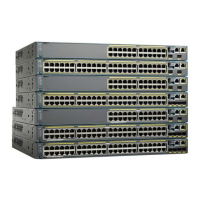CHAPTER 6
Configuring IP Multicast Routing
•
Finding Feature Information, page 93
•
Prerequisites for IP Multicast Routing, page 93
•
Restrictions for IP Multicast Routing, page 94
•
Information About IP Multicast Routing, page 94
•
How to Configure Basic IP Multicast Routing, page 96
•
Monitoring IP Multicast Routing, page 102
•
Configuration Examples for IP Multicast Routing, page 103
•
Where to Go Next, page 103
•
Additional References, page 104
•
Feature History and Information for IP Multicast Routing, page 105
Finding Feature Information
Your software release may not support all the features documented in this module. For the latest feature
information and caveats, see the release notes for your platform and software release.
Use Cisco Feature Navigator to find information about platform support and Cisco software image support.
To access Cisco Feature Navigator, go to http://www.cisco.com/go/cfn. An account on Cisco.com is not
required.
Prerequisites for IP Multicast Routing
You must enable basic IP multicast routing and configure the PIM version and the PIM mode. Then the
software can forward multicast packets, and the switch can populate its multicast routing table.
You can configure an interface to be in PIM dense mode, sparse mode, or sparse-dense mode. The switch
populates its multicast routing table and forwards multicast packets it receives from its directly connected
LANs according to the mode setting. You must enable PIM in one of these modes for an interface to perform
IP multicast routing. Enabling PIM on an interface also enables IGMP operation on that interface.
Catalyst 2960-XR Switch IP Multicast Routing Configuration Guide, Cisco IOS Release 15.0(2)EX1
OL-29426-01 93

